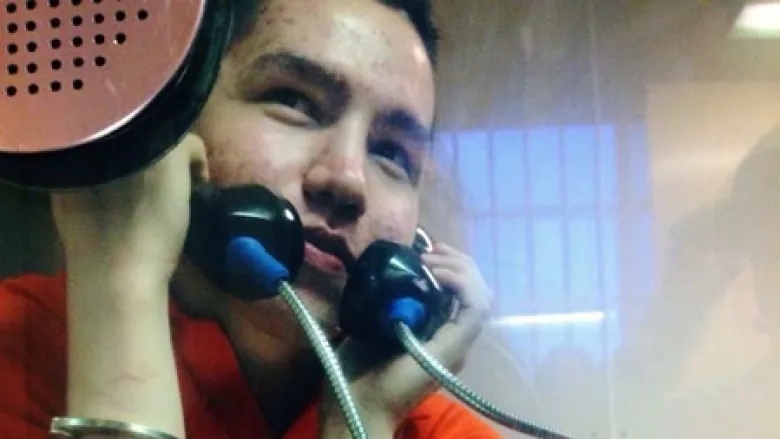
Zamiadi Sol
Sol Zamiadi is graduating in Interdisciplinary program, founder and executive director of Social Justice Canada Network and is pursuing a law degree.
This paper is dedicated to young prisoners and their families who lost their lives while in the care of Correctional Service of Canada
“Prisons were an experiment that replaced the capital punishment in Canada, which aimed to be a more humane response, but what happened is a new system with a different level of inhumanity,” says Senator Kim Pate (Zamiadi, 2022). Unfortunately, the Correctional Service of Canada is the last branch of the administration of justice to disregard the Canadian Charter of Freedoms and Human Rights, according to Senator Kim Pate (Wright, 2019). Correctional Service Canada has been violating the Canadian constitution by overusing solitary confinement as the primary method of punishment for mentally ill prisoners, which is also considered torture or cruel treatment by the UN Standard Minimum Rules, also known as Nelson Mandela Rules (United Nations Office on Drugs and Crime, 2015). Solitary confinement is not the answer and cure for mental health issues; prisons are not the answer for homelessness and poverty. Canadian lawmakers and politicians need to take the necessary steps to upgrade the prison programs and services by reallocating the budget from prisons to mental health facilities, providing more resources to the communities where they can host, supervise, and help individuals with mental health. issues. As a society, we need to focus on rehabilitation and correction; we must try to ensure that once people are criminalized and sent to prison, we do everything possible to assist them in rehabilitating and integrating into communities. Former prisoners must be able to support themselves and become productive contributors to society.

The lack of mental health services in Canadian correctional facilities is not consistent with the research supporting reduction in recidivism and goals for rehabilitation.In2016, Correctional Investigator Howard Sapers, in his report, described how the Canadian prison system has distanced from rehabilitation towards much harsher punishments, particularly towards mentally ill individuals (Ling, 2019). Tom Engel of Engel Law in Edmonton claims that many prisoners do not even get basic medical healthcare which is supposed to be provided in jail as the same standard to the community; they do not even come close to it. Engel suggests that lawyers need to seek sentencing remedies, particularly for those denied basic healthcare and rehabilitation services pursuant to section 24.1 of the Charter(Ling 2019). The executive director of Prisoners’ Legal Services, Jennifer Metcalfe, explains that many prisoners need to report that they are suicidal to be able to receive mental health services (Ling 2019). It is the responsibility of the Correctional Service to provide federal prisoners physical and mental health services; federal prisoners are excluded from the Canada Health Act and are not covered by Health Canada or provincial health care systems (Government of Canada, Priority: Access to physical and mental health care -office of the correctional investigator, 2016).
During the Covid-19 pandemic, many prisoners who were already suffering from mental health issues found themselves in even more crucial conditions due to continuing extended lockdowns, a form of segregation that contributed to trauma and psychological suffering is a form of torture. A report published by the Office of Correctional Investigator, the rate of COVID-19 infections in Canadian federal prisons was five times higher than the rate among the general population (Ahmed et al., 2021) which led to twenty-three hours of lockdown per day. In addition, prisoners were allowed to be out of their cells for twenty minutes; in-person visits were restricted, daily programs were cancelled, etc. These conditions mirror solitary confinement long-term psychological suffering, produce more violence, and increase mental health crises.
According to a study from Simon Fraser University, about three-quarters of people admitted to BC Correction facilities suffered from addiction and mental health issues (Griffiths, 2021).Unfortunately, many mentally ill prisoners have lost their lives due to a lack of mental health services. Being isolated and punished in solitary confinement is not an alternative solution for mental health services. The executive director of the John Howard Society of the lower mainland of BC explains that prisons are not developed to be healthcare facilities, particularly for people with mental illness; the prison system is a punitive system, not a healthcare system (Lupick, 2015).
In 2017 Bill C-56was tabled, which prevented the Correctional Service of Canada from torturing and isolating prisoners in solitary confinement units also known as structured intervention units for more than fifteen days, with a total of sixty days maximum during one year. This Bill is the legacy of the tragic death of Ashley Smith, who is an example of injustice within the Canadian justice system. She was held in prison for minor charges such as assault, trespassing which should not have cost her life. She died in 2007 by self-strangulation at Grand Valley Institution in Kitchener, Ontario. She was only19 and had spent more than 1,000 days (four years) in segregation(Office of the correctional investigator, government of Canada, 2014).”Ashley’s mother was told to trust the professionals (Correctional Service Canada) when Ashley was only fifteen, and what she received in return was Ashley in a body bag” Senator Kim Pate.

Ashley’s mother was told to trust the professionals (Correctional Service Canada) when Ashley was fifteen, and what she received in return was Ashley in a body bag” Senator Kim Pate.
Ashley’s death was announced as a homicide (preventable death) by the coroner’s inquest; one of the jury recommendations was how the correctional system and federal/provincial health care could collectively fail to provide an identified mentally ill, high-risk, high needs inmate with the appropriate care, treatment, and support. The jury also recommended that the mentally ill prisoners should be transferred to mental health facilities where there are much more support and resources than in prisons (Coroner’s inquest, 2014).
Ashley was characterized as being violent and dangerous in the prison system, not someone with mental health issues; during an interview with Senator Kim Pate, she said, “I believe and will go to my death bed believing if there had been any danger or violence by Ashley, it would have been leaked or would have been produced because much of her time in prison was videotaped” (Zamiadi, 2022).
Mental health and a prison setting almost always come with the use of physical and chemical restraints rather than the focus on addressing the issues that brought people there in the first place; Ashley was tortured by physical and mental abuse instead of being treated with proper mental care, she was subject to forced drugging, restraints, pepper spray, and isolation, the only human contact she had was violent interaction with staff. She was described as violent, not a mentally ill prisoner until after her death!
Senator Kim “When every other system fails, and we end up with individuals in the criminal legal system.”
Another victim who illustrate show problematic is the Canadian prison system was a twenty-three-year-old male, Timothy McConnell, who attempted suicide while awaiting trial in the remand center. His charges were shop breaking with intent and theft over $5000.Lana Greene, the mother of Timothy McConnel, believes her son was committing wrongdoing and crimes to support himself and his struggle with addiction. She was initially relieved when he was arrested because she believed he might qualify for the drug court program for non-violent offenders seeking addiction treatment. But unfortunately, he never received the support he needed to treat his opioid addiction(Wakefield, 2021).
During an interview with Dr. Anthony Doob, he illustrated the alternatives solutions which could have helped and saved Timothy and many other young prisoners like him; one of the suggestions was instead of keeping people with no serious charges in remand facilities, place them in the communities with supervision where they could access more resources that they need; unfortunately, the remand prisons do not have proper resources and programs. A step backward for Timothy and Ashley would have been a proper psychiatric assessment; if they got a proper diagnosis, they would have never been placed in prison in the first place; they were not criminals; they were young individuals who needed help from mental health professionals.

On the other hand, it is the responsibility and absolute obligation of Correctional Service of Canada to provide proper care to the prisoners, particularly prisoners who might be at high risk of self-harm or suicide, such as Timothy. The question is, what steps did the prison take to prevent someone who might be committing suicide in case of Timothy? This event should not have happened; unfortunately, many young prisoners have lost their lives due to negligence. How many more young lives need to be lost until a systemic change occurs? We are talking about someone’s son, daughter, grandson, brother and sister. We are talking about human lives. Green says, “I had the most hope for him that I’ve had in the past few years, …., I want answers for the loss of my son, and secondly, there’s people in there suffering right now. And more parents are going through this, and it needs to be fixed”(Wakefield, 2021).
On the other hand, the Indigenous population, particularly those with mental illness who are suffering from intergenerational trauma and effects of residential schools are being discriminated and mistreated within the Canadian justice and prison system. Howard Sapers’ report in 2016 indicates that the justice system has become much tougher on Indigenous offenders, particularly those who have a mental illness, and has distanced from rehabilitation towards longer and longer sentences. In addition, solitary confinement has become a convenient way for prisons to deal with issues as an alternative for not having adequate resources (Ling, 2019).
Adam Capay is one example who was subject of the inhumane, injustice and unfair treatment while in the care of Correctional Service of Canada. Adam is a young Indigenous male with a severe mental illness, who was kept in solitary confinement for over 1647 days (over four years) and never received substantive mental health services. Adam was raised by a family with severe alcohol dependency issues rooted in residential schools. In 2012, while he was serving a five-month sentence at Thunder Bay Correctional Centre for damaging his mother’s vehicle and breaching a court order and condition from previous assault charges. Then he murdered another inmate and was transferred to solitary confinement in Thunder Bay Jail, where he was kept for over four years. Justice Fregeau found that this inhumane treatment had a “serious, profound” impact on his “psychological integrity” and violated his Charter rights, including his rights to life, liberty and security of the person; the right not to be arbitrarily detained; the right not to be subjected to cruel and unusual punishment (Mandhane, 2019).
On the other hand, we are also witnessing the fastest-growing prison population of Indigenous men and women, particularly those with mental illness. They are being incarcerated not because they pose the greatest risk to public safety but because they are the most marginalized, says Senator Kim Pate, (Zamiadi, 2022). In the recent report of the Correctional Investigator, Dr. Ivan Zinger, new data indicates that the proportion of incarcerated Indigenous women is increasing, and it is nearly 50% of all women in federal prisons in 2021. They are experiencing mental health and substance issues which is rooted in residential school, intergenerational trauma and economic challenges.
Furthermore, it is heartbreaking to witness that the most majority of the Canadian prison population are the incarcerated and mentally ill Indigenous people are being punished for being the victim of residential schools.” Over-representation of Indigenous people in correctional settings remains one of Canada’s most pressing human rights issues, and is evidence of public policy failures over successive decades as no government has been able to stop or reverse this trend,” said the Correctional Investigator Dr. Zinger.
Dr. Zinger suggested the government needs to take immediate action to resolve this issue, such as appointing a Deputy Commissioner for Indigenous corrections, reallocating existing resources from the Correctional Service of Canada to Indigenous communities and supervision of Indigenous people. Dr. Zinger demanded, “Healing Lodges and community-based services owned and operated by Indigenous communities can only yield better outcomes for federally sentenced Indigenous people” (Office of the Correctional Investigator, Government of Canada, 2021).
The death of Ashley Smith, Timothy McConnell and the inhumane treatment of Adam Capay are the examples of how Canadian prison system is problematic. Unfortunately, prisons are hidden from view in Canada, and there is not much sympathy for prisoners. Suppose Canadians do not care about prisoners but they need to realize that for their own interests they must, because these prisoners, particularly young offenders, are coming back to communities and will be someone’s neighbours. We need to ask ourselves do we want a neighbour who is a rehabilitee and independent individuals who knows how live a healthy life or we want a neighbor who had not had any training, did not receive mental health care and does not have knowhow to live a healthy life style without considering further harm.

According to Dr. Doob government needs to reallocate the investment to mental health facilities or halfway houses in the communities where proper resources and effective rehabilitation could be provided for individuals like Ashly, Timothy and Adam, which would reduce the number of prisoners in remand by half which leads into saving money to help people instead of investing in guards, securities, and facilities in prisons, without obtaining any positive result from incarcerating people. Dr. Doob explains that the government deals with two problems once the overlap and overuse of pre-trial custody can be reduced. Second, the money transfers from pre-trial detention to providing mental health services (Zamiadi, 2022).
In order to achieve such a goal, our lawmakers and politicians need to think and care about Canada and the Canadians first rather than getting the majority votes, and that would be possible if the political parties pay attention to the criminal justice and prisons system. Our politicians need to model Solicitor General of Canada Bob Kaplan, who secured the Young Offender Act with the Juvenile Delinquents Actin 1982,which came into effect in 1984, Kaplan believed someone had to do the right thing, which at the time was better law for Canadian kids, and every minister, even the opposition went along with him (Zamiadi, 2022).At this time, we need a politician who says it is time to do something for adult prisoners. That would be providing mental health services and educational programs to help them integrate into society, avoid recommit, and prevent harm.
“When someone goes to prison, it was the failure of every other system that led to that person being imprisoned, not just a personal failing.” senator Kim pate
During the interview senator, Kim Pate introduced us to a new bill, called S-230which is requesting that mentally ill individuals be moved from prison into appropriate forensic or mental health settings, the other part of the Bill facilitate greater access to the community and all communities to seek resources that currently are going to the prisons to set up those supports in the community (Zamiadi, 2022).

Countries like the United States have illustrated that punitive systems, longer sentences and harsher punishment have not yielded positive results and that it is, in fact, one of the countries with the highest incarceration and crime rate in the world (World Population Review, 2022).Countries with lower incarceration and crime rates offer better living standards, better health care systems, including mental health care, accessible education, and much less poverty. There is a positive relationship between providing a proper standard of living and lower crime rates.
Canada must model countries such as the Netherlands, which has invested more in mental health facilities than prisons. According to the Dutch Ministry of Justice, as soon as prisoners enter the prisons, they are seen and evaluated by psychologists and psychiatrists, and the mentally ill prisoners are sent to different levels of psychiatric centers, such as the Penitentiary Psychiatric Centre for severe cases and Extra Care Facility which is a quiet and stimulating environment for less severe cases. This early streamlining is very important and beneficial, particularly for those that might be at risk of self-harm (Hogenboom).
We must stop putting endless amounts of money into the prison system instead of investing resources in communities so that we have fewer people being victimized, being criminalized and imprisoned. This goal can be achieved by addressing individual needs and socio-environmental conditions such as providing recreational and sports activities. We must also provide good quality education and schools where young people can get educated on related issues to violence, crime and consequences, in addition to addressing red flags and youth crimes early, particularly in communities where there is much violence and crime. There is still time to save many Ashleys, Timothys and Adams, by caring for prisoners humanely.
Acknowledgement
I would like to acknowledge and thank my support network who guided, educated and supported me in this journey; special thanks to Senator Kim Pate, Dr. Anthony Doob, Diana Twiss & Dr. Justin Wilson.
Works Cited
Ahmed, J., Diamond, L., Chen, K., Qian, D. (2021).’it’shell for inmates in there’: Covid precautions in prisons are worsening mental health.Healthy Debate.https://healthydebate.ca/2021/05/topic/prisons-covid-mental-health/
Coroner’sinquest touching the death of Ashley Smith: Verdict of Coroner’sjury -thecoroners act –province of Ontario.(2014).Correctional Service Canada.https://www.csc-scc.gc.ca/publications/005007-9009-eng.shtml
Davies, B. (2017, October 25).Ending segregation,is a fitting legacy for Ashley Smith.thestar.com.https://www.thestar.com/opinion/commentary/2017/10/25/ending-segregation-a-fitting-legacy-for-ashley-smith.html
Government of Canada, P. S.,and P. C. (2013, April 3).Report of the Royal Commission to investigate thepenal system of Canada / Joseph Archambault, chairman.:CP32-100/1938e-PDF;Z1-1936/2E-PDF -government of Canada publicationscanada.ca.https://publications.gc.ca/site/eng/472633/publication.html
Government of Canada, P. S.,and P. C. (2013).Commission of Inquiry into certain events at the prison for women in Kingston / the honourable Louise Arbour commissioner.:JS42-73/1996e-pdf -government of Canada publications -canada.ca. https://publications.gc.ca/site/eng/9.831714/publication.html
Government of Canada, Officeof the CorrectionalInvestigator.(2016).Priority: Access to physical and mental health care -office of the correctional investigator. https://www.oci-bec.gc.ca/cnt/priorities-priorites/health-sante-eng.aspx
Griffiths, N. (2021, December 5).Seventy-fivepercentof people sent to BCprisons struggle with addiction, Mental Health: Study.Vancouver Sun. https://vancouversun.com/news/local-news/75-per-cent-of-people-sent-to-prison-in-b-c-struggle-with-addiction-mental-health-study
Hogenboom, M. (2018).The unique way the Dutch treat mentally ill prisoners.BBC Future.https://www.bbc.com/future/article/20180423-the-unique-way-the-dutch-treat-mentally-ill-prisoners
Ling, J. (2019).Canada’sprisons are failing.CBA National Magazine.https://www.nationalmagazine.ca/en-ca/articles/law/in-depth/2019/canada-s-prisons-are-failing
Lupick, T. (2015).Mentally ill inmates are increasingly held in solitary confinementin Canadian prisons.The Georgia Straight. https://www.straight.com/news/602746/mentally-ill-inmates-increasingly-held-solitary-confinement-canadian-prisons
Mandhane, R. (2019).Adam Capay’scase shows Ontario must eliminate the inhumane practice of segregation.Ontario Human Rights Commission.https://www.ohrc.on.ca/en/news_centre/adam-capay-case-shows-ontario-must-eliminate-inhumane-practice-segregation
Mental Health Commission of Canada.(2021).COVID-19, mental health, and substance use in correctional settings: Considerations for addressing systemic vulnerabilities —Policy brief.Ottawa, Canada: Mental Health Commission of Canada.
Office of the Correctional Investigator, Government of Canada.(2021).The proportionof indigenous women in federal custody nears 50%: Correctional investigator issues statement.https://www.oci-bec.gc.ca/cnt/comm/press/press20211217-eng.aspx#:~:text=%E2%80%9COver%2Drepresentation%20of%20Indigenous%20people,Dr.
Office of the Correctional Investigator,Government of Canada.(2014).Office of the correctional investigator -backgrounder: A preventable death. https://www.oci-bec.gc.ca/cnt/rpt/oth-aut/oth-aut20080620info-eng.aspx
S-230 44th parliament, 1st Session November 22, 2021, to present. S-230 (44-1) –LEGISinfo -Parliament of Canada. (2021). https://www.parl.ca/legisinfo/en/bill/44-1/s-230
United Nations Office on Drugs and Crime. The United Nations Standard Minimum Rules for the Treatment of Prisoners. (2015). Retrieved March 31, 2022, from https://www.unodc.org/documents/justice-and-prison-reform/Nelson_Mandela_Rules-A_ebook.pdf
Wakefield, J. (2021).An inmatewho took his own life struggled to get support.PressReader.com -Digital Newspaper & Magazine subscriptions.https://www.pressreader.com/canada/edmonton-journal/20210122/281530818681256
Webster, P. (2019).Canadian prisons face new legal challenges over Mental Health.The Lancet Psychiatry, 6(7), 567–569. https://doi.org/10.1016/s2215-0366(19)30228-7
White, P. (2019).Adam Capay’s1,647 days in solitary: new details emerge as Ontario decides not to appeal stay of the murder charge.The Globe and Mail.https://www.theglobeandmail.com/canada/article-ontario-will-not-appeal-decision-to-abandon-murder-charge-against-adam/
World Population Review.Incarceration rates by country 2022.https://worldpopulationreview.com/country-rankings/incarceration-rates-by-country
Wright,T. (2019).Senate committee approves changes to solitary confinement bill.Canada’sNationalObserver. https://www.nationalobserver.com/2019/05/30/news/senate-committee-approves-changes-solitary-confinement-bill
Zamiadi, S., & Dr. Doob, A. (2022).“Lack of Mental Health Services in Canadian Correctional Facilities.”Social Justice Canada Network.https://podcasts.apple.com/ca/podcast/lack-of-mental-health-services-in-canadian/id1580238205?i=1000551307078.
Zamiadi, S., & Senator Pate, K. (2022). “Mental health servicesand educational programsin Canadian correctional facilities.”Social Justice Canada Network.https://podcasts.apple.com/ca/podcast/senator-kim-pate-shares-her-opinion-and-knowledge/id1580238205?i=1000553643376